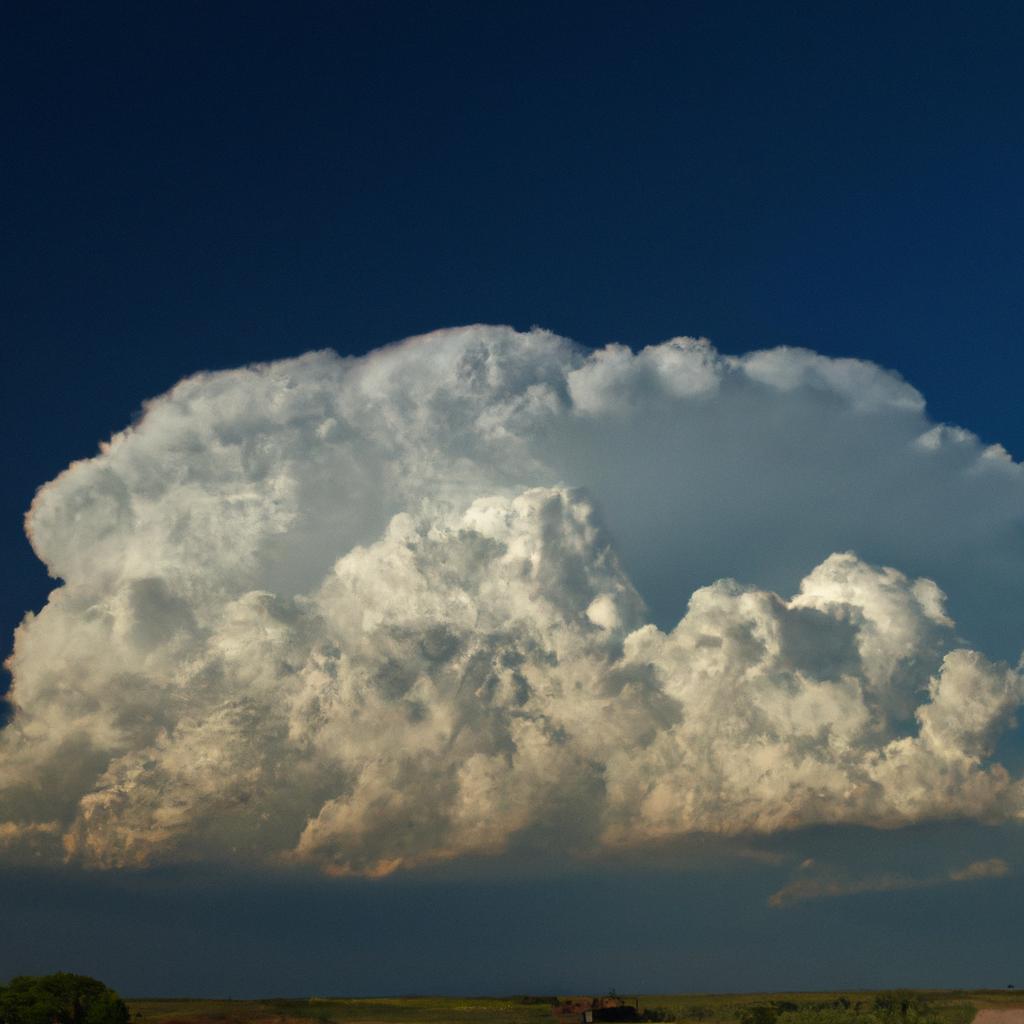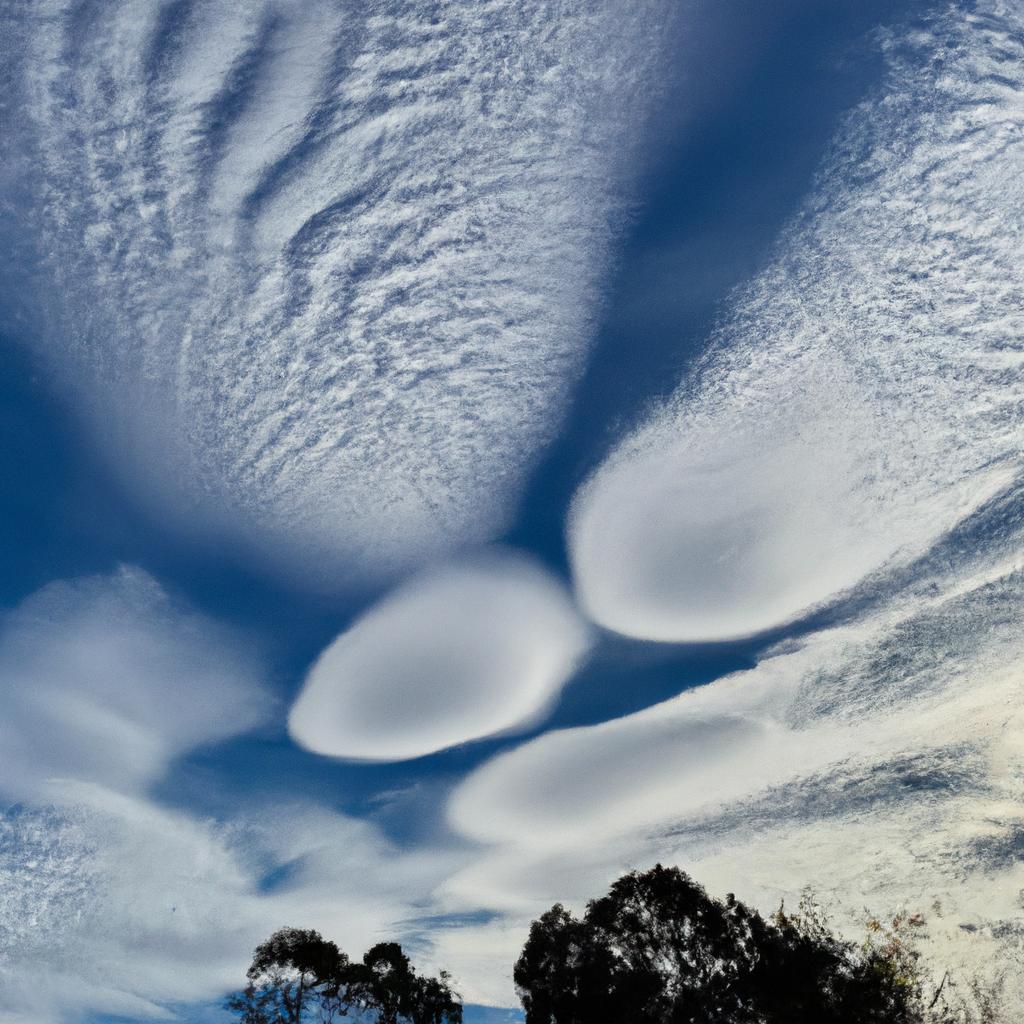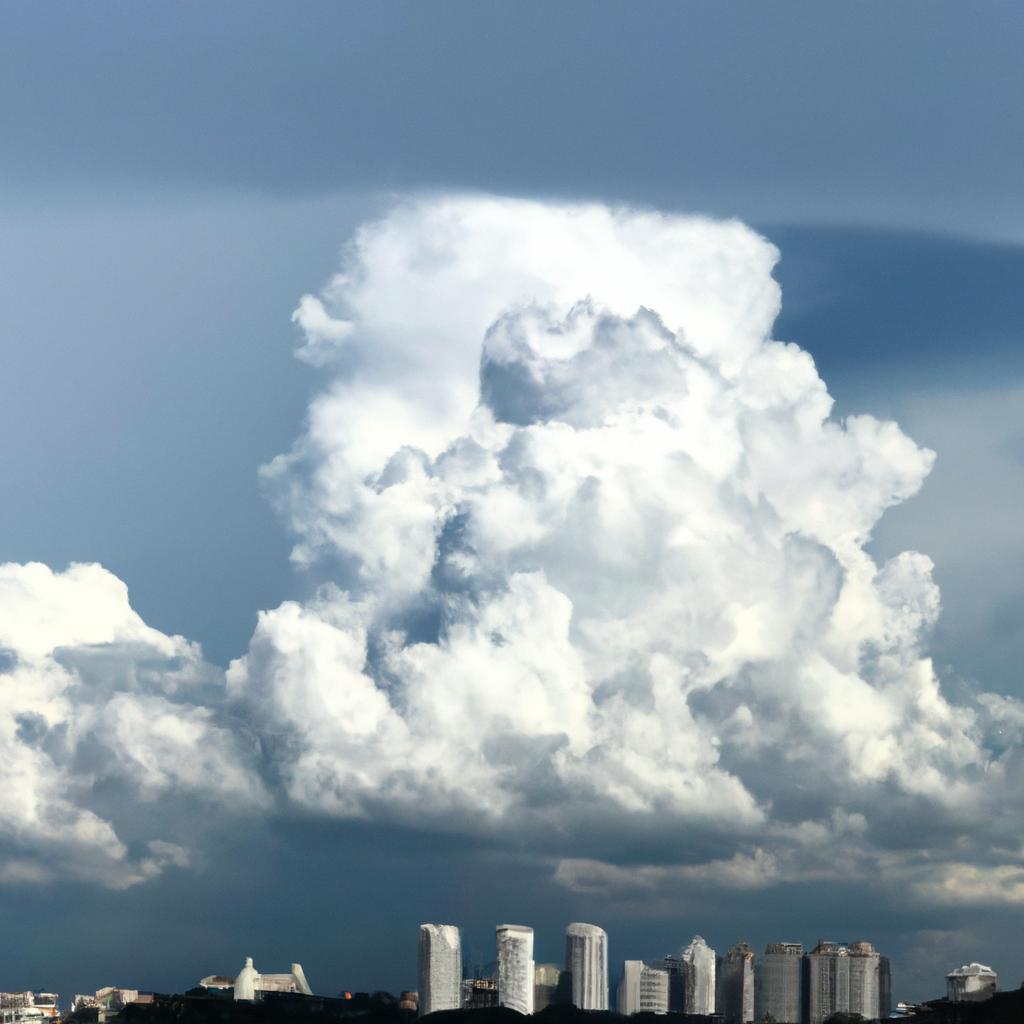The sky has always captivated human beings with its ever-changing colors, patterns, and shapes. Amidst nature’s grandeur, one cloud formation stands out in particular: the skyscraper cloud. In this article, we will delve into the essence of skyscraper clouds, exploring their definition, formation, and significance.
The Sky and Clouds: A Fundamental Understanding
Before we examine skyscraper clouds, let’s start with the basics. The sky encompasses the expanse of space above the earth, revealing the sun, moon, stars, and planets. On the other hand, clouds are visible masses of water droplets or ice crystals suspended in the atmosphere. These clouds form when water vapor condenses into visible droplets or crystals.

Skyscraper Clouds Unveiled
Skyscraper clouds tower high above the ground, reaching staggering heights of up to 60,000 feet. They materialize when warm, moist air rises rapidly into the atmosphere, cooling and condensing into clouds. Thunderstorms often accompany these imposing formations, characterized by intense lightning, thunder, and heavy rain.

The Significance of Skyscraper Clouds
The study of skyscraper clouds holds great importance for various reasons. Firstly, they provide valuable insights into weather patterns and atmospheric conditions. Meteorologists analyze these clouds’ formation, shape, and movement to make more accurate weather predictions. Moreover, skyscraper clouds impact climate change by reflecting sunlight back into space, thereby cooling the earth’s surface.

Next, we will explore the intricate process that gives rise to skyscraper clouds.
Unveiling Skyscraper Cloud Formation
Skyscraper cloud formation is a complex process influenced by various atmospheric conditions. In this section, we will examine the vital role of these conditions and their impact on skyscraper cloud formation.
The Role of Atmospheric Conditions
Atmospheric conditions play a crucial role in the creation of skyscraper clouds. When warm, moist air ascends rapidly into the atmosphere, it cools and condenses, giving rise to clouds. Known as convection, this process is the primary mechanism behind skyscraper cloud formation. Additionally, variables such as temperature, humidity, and wind influence the development of these clouds.
The Importance of Temperature and Humidity
Temperature and humidity are pivotal factors affecting skyscraper cloud formation. As warm, moist air rises, it cools and condenses into water droplets or ice crystals. The rate of this transformation depends on the air’s temperature and humidity. If the air lacks moisture, water vapor will not condense into clouds. Similarly, if the air remains warm, the formation of ice crystals, necessary for certain types of skyscraper clouds, will not occur.
The Impact of Wind on Cloud Formation
Wind also plays a significant role in skyscraper cloud formation. Oftentimes, warm, moist air is propelled upwards by wind currents. This faster ascent can lead to the creation of larger and more intricate cloud structures. Wind affects the shape, direction, and movement of these clouds across the sky.

Now, let’s explore the distinguishing characteristics of skyscraper clouds and their meteorological significance.
Distinguishing Skyscraper Clouds
Skyscraper clouds boast impressive features that set them apart in the sky. Their towering heights, coupled with their unique shapes, colors, and textures, make them extraordinary. Let’s delve into the distinct characteristics of skyscraper clouds.
Height and Altitude
Skyscraper clouds are renowned for their towering heights, reaching up to 60,000 feet. They are often referred to as “thunderheads” due to their association with thunderstorms. The altitude of these clouds varies based on their type and the atmospheric conditions surrounding their formation.
Shape and Structure
Skyscraper clouds manifest a wide range of shapes and structures, dictated by their types and the atmospheric conditions in which they form. For instance, cumulonimbus clouds feature an anvil-shaped top and a flat base, while altocumulus lenticularis clouds resemble lenses or almonds.
Color and Texture
The color and texture of skyscraper clouds also exhibit diversity, influenced by their types and the atmospheric conditions at play. Cumulonimbus clouds often present a dark and brooding appearance, while cirrus clouds appear wispy and delicate. The texture of skyscraper clouds spans from smooth and flat to rough and bumpy.
Meteorological Significance
Skyscraper clouds yield vital information about weather patterns and atmospheric conditions. They are closely associated with thunderstorms, characterized by lightning, thunder, and heavy rain. Furthermore, these clouds impact climate change by reflecting sunlight, cooling the earth’s surface. By analyzing skyscraper cloud characteristics, meteorologists can enhance weather predictions and gain insights into climate change’s environmental consequences.

Skyscraper Clouds and Climate Change
As the earth’s climate undergoes alarming changes, even skyscraper clouds are not exempt from their effects. In this section, we will explore how climate change impacts skyscraper clouds, altering their formations, patterns, and relationship with global temperatures.
The Impact of Climate Change on Cloud Formation
Climate change profoundly affects cloud formation in numerous ways. Rising temperatures lead to increased atmospheric water vapor, resulting in more frequent and intense cloud development. Consequently, this results in larger and more persistent skyscraper clouds, intensifying storms and rainfall.
Changes in Skyscraper Cloud Patterns
Climate change not only amplifies the frequency and intensity of skyscraper clouds but also alters their patterns. Research indicates a rising prevalence of cumulonimbus clouds, commonly associated with thunderstorms, in various regions. This shift in patterns holds significant implications for weather phenomena and the occurrence of extreme events.
The Relationship between Skyscraper Clouds and Global Temperatures
Skyscraper clouds exert a notable influence on global temperatures. When sunlight hits the earth’s surface, some of it is reflected back into space by clouds. This reflection, termed albedo, helps cool the earth’s surface. However, fewer clouds mean less sunlight is reflected, contributing to higher temperatures.
In conclusion, skyscraper clouds serve as awe-inspiring natural phenomena, towering above the earth’s surface. Their formation occurs when warm, moist air rapidly ascends, cools, and condenses. Cumulonimbus clouds, altocumulus lenticularis clouds, cirrus clouds, and stratocumulus clouds are just a few of the various types, each possessing unique characteristics and significance.
Studying skyscraper clouds is vital for comprehending weather patterns, atmospheric conditions, and climate change. By delving into their formation, shape, and movement, meteorologists can improve weather forecasts, while scientists gain insights into the evolving climate.
At TooLacks, we are committed to providing the latest information on nature, gardening, and animals. We hope this article has both enlightened and engaged you. Embrace the wonders of the natural world by continuing to explore its captivating elements.
TooLacks – Unveiling Nature’s Wonders



